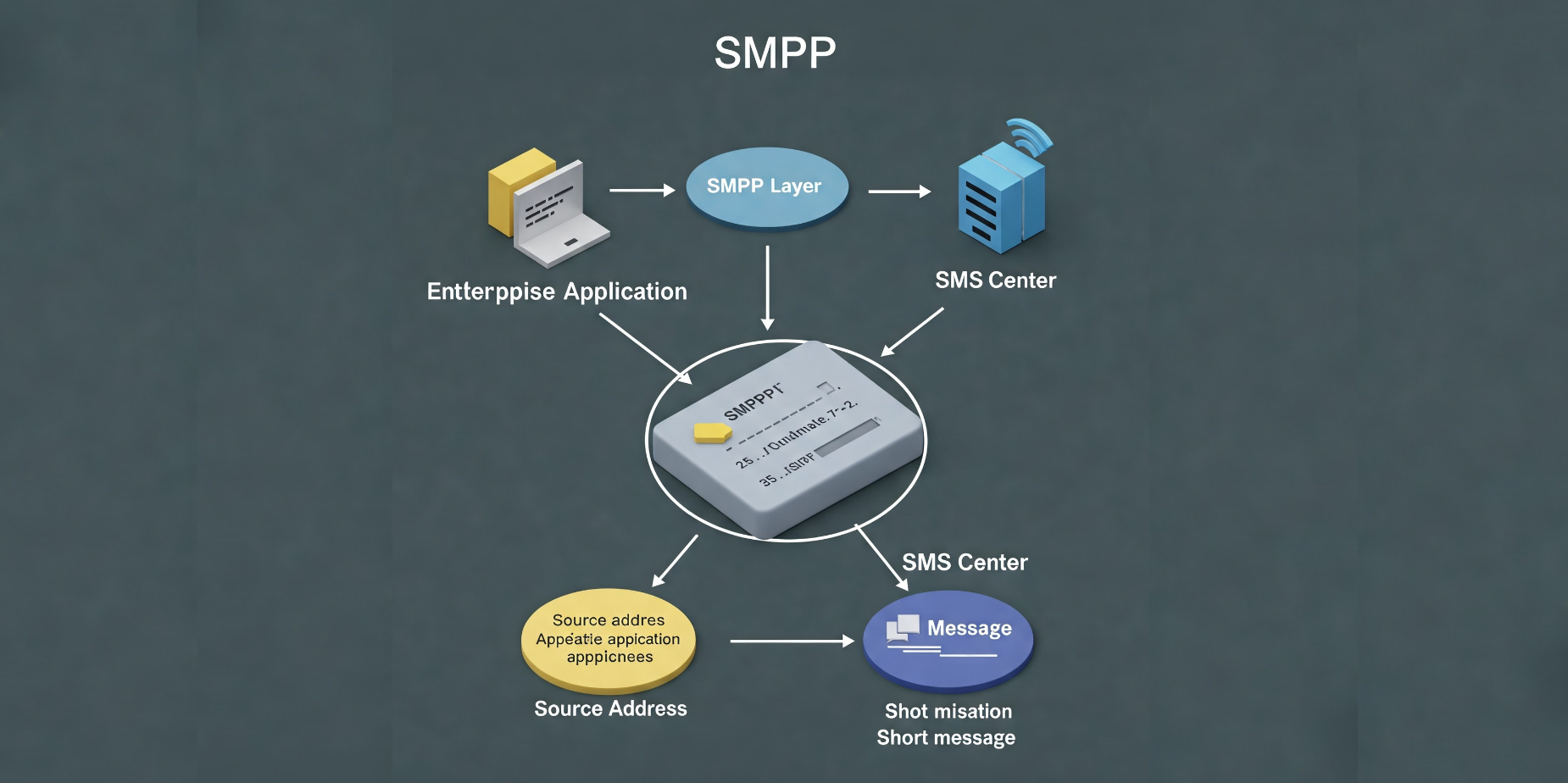Most companies, at some point in their growth, hit the same wall. Lots of marketing…

What is Short Message Peer-to-Peer (SMPP): Guide for 2025
Table of Contents
Short Message Peer-to-Peer (SMPP): The Engine Behind SMS Communication
Short Message Peer-to-Peer (SMPP) is a protocol that allows third-party applications to interact with Short Message Service Centers (SMSCs) to send and receive SMS messages. Essentially, it’s the behind-the-scenes technology that enables various applications, from marketing platforms to notification systems, to send SMS messages reliably and efficiently. Think of it as the bridge connecting your favorite apps to the SMS network.
Why SMPP?
Before SMPP, integrating SMS functionality into applications was complex and often required proprietary solutions. SMPP standardized this process, providing a common language for applications to communicate with SMSCs. This standardization made SMS integration much easier and more accessible, leading to the proliferation of SMS-based services we see today.
How SMPP Works:
SMPP operates over TCP/IP connections and defines a set of operations and data structures for exchanging SMS messages. Here’s a simplified breakdown:
-
Connection Establishment: An application (e.g., a marketing platform) establishes a connection to the SMSC using SMPP.
-
Binding: The application “binds” to the SMSC, authenticating itself and specifying its role (e.g., sender, receiver, or both). Different bind types exist, such as transmitter (TX), receiver (RX), and transceiver (TRX).
-
Message Submission: To send an SMS, the application submits a message to the SMSC using the SMPP protocol. This message includes details like the recipient’s phone number, the message content, and other parameters.
-
Message Delivery: The SMSC then handles the delivery of the message to the recipient’s mobile phone
-
Message Reception (if applicable): If the application is also bound as a receiver, it can receive incoming SMS messages through the SMPP connection.
Key Features of SMPP:
- Flexibility: SMPP supports various types of SMS messages, including standard text messages, binary messages, and multi-part messages (for longer content).
- Reliability: SMPP provides mechanisms for ensuring reliable message delivery, including delivery receipts and retry mechanisms.
- Efficiency: SMPP is designed for efficient message throughput, making it suitable for high-volume SMS applications.
- Asynchronous Communication: SMPP allows for asynchronous communication, meaning that the application doesn’t need to wait for a response immediately after submitting a message. This improves performance and allows for parallel processing.
Use Cases for SMPP:
SMPP is used in a wide range of applications, including:
- SMS Marketing: Sending bulk SMS messages for promotional campaigns.
- Notifications: Delivering time-sensitive alerts and notifications (e.g., appointment reminders, delivery updates).
- Two-Way Messaging: Enabling interactive communication between applications and users (e.g., voting, surveys).
- Mobile Banking: Facilitating SMS-based banking transactions.
- Emergency Alerts: Disseminating critical information during emergencies.
SMPP vs. Other SMS APIs:
While other SMS APIs exist, SMPP remains a popular choice due to its flexibility, reliability, and efficiency. It’s often preferred for high-volume SMS applications and those requiring fine-grained control over the SMS delivery process.
In Summary:
SMPP is a powerful and versatile protocol that plays a crucial role in enabling SMS communication for a wide range of applications. It provides a standardized and efficient way for third-party applications to interact with SMSCs, making SMS integration seamless and accessible. Understanding the basics of SMPP can be valuable for anyone involved in developing or managing SMS-based services.


